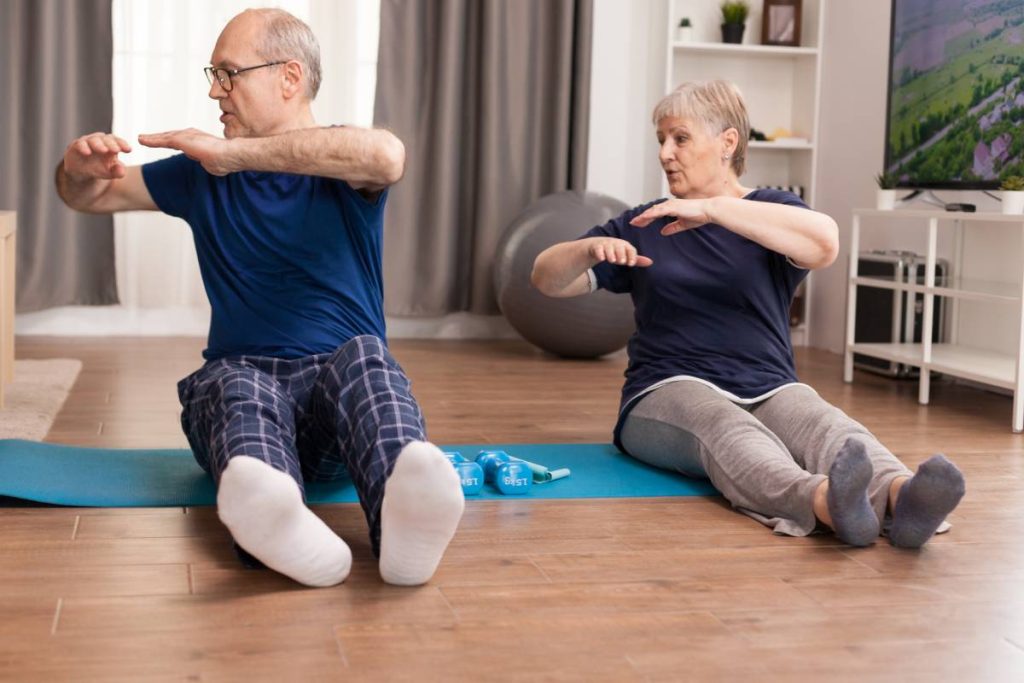Here’s a simple guide to the amount of exercise you should aim for based on your age. Right now, you might not prioritize exercise, but the World Health Organization (WHO) suggests that you should.
According to their guidelines, 1 in 4 adults (and 4 out of 5 adolescents) aren’t getting sufficient aerobic exercise. While that may not sound too concerning, a lack of physical activity can increase the risk of an early death by 20 to 30%. On the positive side, exercise is a powerful preventive measure, known to help guard against cardiovascular disease, diabetes, depression, and anxiety. It can also enhance cognitive functions like thinking, learning, and judgment — and even contribute to a better night’s sleep.
How Much Should You Move?
The updated guidelines from the World Health Organization (WHO) suggest aiming for at least 150 to 300 minutes of moderate activity per week, or 75 to 150 minutes of vigorous activity, or a mix of both. This translates to about 1 hour and 15 minutes to 5 hours per week.
Although this might seem like a considerable amount, when you break it down daily, it’s less than an hour, as explained by Peter Katzmarzyk, Ph.D., from the Pennington Biomedical Research Center. According to him, “150 to 300 minutes per week averages to about 21 to 43 minutes per day.” The WHO emphasizes a weekly total instead of a daily target to allow flexibility and acknowledge that it’s okay to miss a day.
Engaging in around 300 minutes of exercise weekly may bring extra benefits, especially for those looking to lose weight. A study in Medicine & Science in Sports & Exercise revealed that after 12 weeks, participants who exercised this amount experienced a loss of nearly four pounds of body fat (participants were overweight, sedentary adults).

Fitness Guide to Your Needs
Determining how much exercise is right for you involves considering various factors. The World Health Organization (WHO) not only specifies the quantity and intensity of exercise for optimal health but also recommends specific types, including a mix of aerobic exercises and muscle-strengthening activities. The guidelines extend beyond general recommendations for children, adolescents, adults, and seniors; they also provide targeted advice for:
- Pregnant and postpartum women.
- Individuals with chronic health conditions.
- People living with disabilities.
Here’s a breakdown of the recommended activity levels for you and your family, according to the WHO:
- Children and adolescents (ages 5-17): Aim for a minimum of 60 minutes of moderate to vigorous physical activity each day. Include at least 3 days a week of vigorous aerobic activity and activities that enhance muscle and bone strength.
- Adults (ages 18-64): Target 150 to 300 minutes of moderate (or 75 to 150 minutes of vigorous) aerobic activity per week. Additionally, engaging in muscle-strengthening exercises twice a week can bring extra benefits.
- Older adults (over age 65): Follow the same guidelines as younger adults but incorporate strength and balance training 2 to 3 times a week to prevent falls.
- Pregnant and postpartum women: Aim for 150 minutes of moderate-intensity aerobic activity per week, including muscle-strengthening exercises.
- People with chronic health conditions and disabilities: These individuals can benefit from the same recommendations as healthy adults and children, with modifications as advised by their healthcare provider.
How to Begin Physical Activity?

Starting to be more active may seem challenging, but it’s really just about moving more. If you’re unsure where to start, these tips can guide you:
- Take it easy: If you’re new to exercise or find it intimidating, begin with something enjoyable like stretching, an easy walk, or dancing to your favourite music, suggested Carol Ewing Garber, Ph.D., an exercise physiologist and professor in New York City.
- Include strength exercises: Building strength is important, so consider incorporating callisthenics, weight training, or a resistance band workout into your routine, according to Ewing Garber.
- Break it down: Vanessa M. Kercher, Ph.D., an exercise physiologist, advises not trying to do all your activity at once. Instead, identify moments throughout the day to incorporate short bursts of movement. As you succeed, set more specific goals related to time and intensity.
- Family Challenge: Make it a fun family affair by setting daily push-ups and body squat goals that can be done at home while cooking or doing laundry, as suggested by Kercher.
- Make it Fun and Easy to Stay Active: For kids, the key is to have fun. Take them outside to the park, even if it’s a bit cold or snowing. Let them play, kick a ball, climb, ski, or ride their bike or scooter.
- Get Creative: Try movement videos, create a dance video, play musical chairs, or organize a scavenger hunt.
- For Teenagers: This can be a bit more challenging. If you have space, consider activities like indoor hoops or soccer with foam balls. Alternatively, go old school and encourage them to run errands on foot or even camping.
Final Thought
If these suggestions still seem too ambitious, remember that any amount of exercise is better than none. Don’t worry about intense, hour-long workouts. Start by seizing every opportunity to move in any way you can, at your own pace, for any amount of time, as emphasized in the guidelines.



